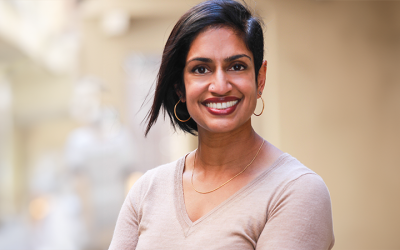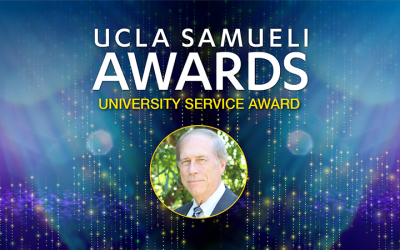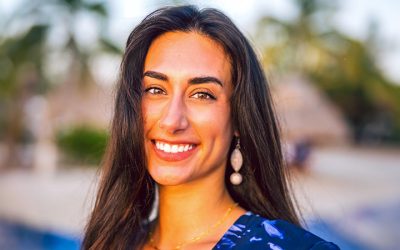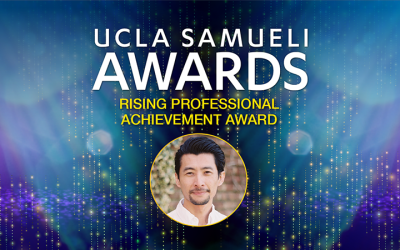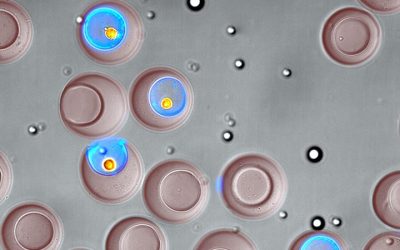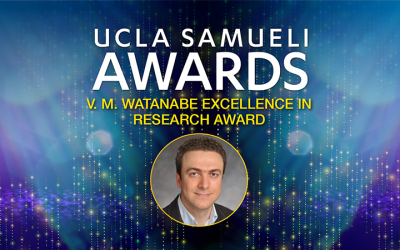
HEADLINES – UCLA Samueli In The News 2015
December 2015
BBC Earth
Penguin’s Anti-Ice Trick Revealed
Bird feathers are known to have hydrophobic, or non-wetting, properties. But scientists from UCLA, University of Massachusetts Amherst and SeaWorld wanted to know what makes Antarctic penguins’ feathers extra ice repelling.“What we learn here is how penguins combine oil and nano-structures on the feathers to produce this effect to perfection,” explains UCLA mechanical and aerospace engineering professor Pirouz Kavehpour. The news was also carried in theThe Huffington Post; The Christian Science Monitor; Discovery News; the Daily Mail(U.K.); and the Daily Mirror (U.K.).
New Scientist
Blood Gushes From Virtual Leg Injury to Help Train Combat Medics (with video) If you’re very squeamish, look away now. Researchers have created the first detailed simulation of a human leg injured by flying shrapnel, gushing blood and all. The goal is to train combat medics on a virtual patient that reacts in realistic ways. Jeff Eldredge, UCLA professor of mechanical and aerospace engineering, who led the work in collaboration with colleagues from the Center for Advanced Surgical and Interventional Technology (CASIT) at the David Geffen School of Medicine, was quoted in the article. The news was also carried in Motherboard;Slate; Popular Science; and Gizmodo.
November 2015
Los Angeles Enacts Sweeping New Earthquake Regulations
John Wallace, professor of civil and environmental engineering, was interviewed about strict new City of Los Angeles regulations designed to spur seismic repairs and upgrades to thousands of buildings.
Communications of the ACM
Discovering Genes Involved in Disease and the Mystery of Missing Heritability
Eleazar Eskin, associate professor of computer science, wrote the cover article for the Association for Computing Machinery’s monthly general interest magazine. The story highlighted the progress so far, and challenges ahead, for computer scientists on what’s known as “missing heritability.” Avideo accompanied the story.
October 2015
How Concrete Buildings Fail in Earthquakes
Accompanying a story on the Los Angeles City Council’s approval of new earthquake standards for buildings was a graphic showing how support within concrete columns is a key factor in the strength of a concrete building. UCLA civil and environmental engineering professor John W. Wallace among those credited as a source of the images.
IEEE Spectrum
How a Microscopic Supercapacitor Will Supercharge Mobile Electronics
Ric Kaner, professor of chemistry and biochemistry, and materials science and engineering, and chemistry post-doctoral scholar Maher F. El-Kady, write in IEEE Spectrum on their work in building microsupercapacitors, which could dramatically bringing down their size of energy storage for use in electronic devices.
The Naked Scientists (podcast)
Magnetic Material Signals Car Crashes
John Domann, a mechanical engineering graduate student advised by Professor Greg P. Carman, was interviewed by the Cambridge University-based podcast The Naked Scientists, on recent published results on galfenol, a magneto-elastic material. One application could help computers in cars react to a collision and protect passengers, as the material’s signal travels at the speed of light. The research was also highlighted inPhys.org.
Space.com
New Antenna Could Give Mars Rovers a Direct Line to Earth
Professor Yahya Ramat-Samii and his students are featured in an article on new antenna design, which combines many small antennas, known as antenna elements, into a larger single antenna, using a unique geometry, and could be used for interplanetary communications.
Network World
IP Was Middle School, Named Data Networking is College
Network World writes on the 2015 conference for the Named Data Networking Project, which is based at UCLA. Several UCLA faculty members affiliated with the project are quoted.
September 2015
A New Design for Cryptography’s Black Box
A two-year-old cryptographic breakthrough has proven difficult to put into practice. But new advances show how near-perfect computer security might be surprisingly close at hand. “As of right now it seems like there are no big limitations,” said Amit Sahai, a computer scientist at the University of California, Los Angeles, who was a co-author on both of the papers. “IO (indistinguishability obfuscation) is powerful and can do almost anything we’ve ever wanted to do.”
Symmetry Magazine
Scientists Accelerate Antimatter
A study led by researchers from SLAC National Accelerator Laboratory and the University of California, Los Angeles, has demonstrated a new, efficient way to accelerate positrons, the antimatter opposites of electrons. The method may help boost the energy and shrink the size of future linear particle colliders—powerful accelerators that could be used to unravel the properties of nature’s fundamental building blocks.
The Conversation
Talking to Mars: New Antenna Design Could Aid Interplanetary Communication
EE Ph.D. students Jean Paul Santos and Joshua Kovitz, along with Professor Yahya Rahmat-Samii, are currently featured on The Conversation, an online news organization sourced from the academic and research community. As a result of being named the UCLA Grad Slam winner of 2015, Santos was invited to elaborate on his 3-minute “TED” style speech, which focused on the development of novel antenna array for future Mars rovers. Through a collaboration with JPL engineers, Santos, Kovitz, and Rahmat-Samii were able to prototype a 4×4 subarray antenna with excellent measured results, potentially allowing its use for the upcoming Mars2020 mission.
August 2015
The Computer Chip That Never Forgets
UCLA co-authors Pedram Khalili, adjunct assistant professor of electrical engineering, and Kang L. Wang, a distinguished professor and the Raytheon Chair in Electrical Engineering at UCLA, describe an emerging candidate for a “universal” computer memory that could lead to the merging of the two separate components of the computer – the central processing unit which performs calculations and logical operations, and the memory bank which store instructions and data. The candidate is a type of magnetic memory called magneto¬electric random access memory, or MeRAM.
Science
Science Careers: Journeying Back in Time with Ancient DNA
In November, Sriram Sankararaman will start his own research group as an assistant professor in the computer science department at UC Los Angeles. He plans to use both ancient and modern sequences to investigate population genetics and evolution. As the amount of available sequence data continues to grow, he thinks he has his work cut out for him.
Computer World
NASA Chip Reflects Wi-Fi to Save Your Smartphone Battery
The project is headed up by Adrian Tang of NASA and UCLA’s M.C. Frank Chang. Their approach is to develop a wireless silicon microchip for wearable devices that can transmit data by reflecting wireless signals instead of using regular transmitters and receivers. Also carried in Electronics Weekly,Popular Science, and Engineering.com.
The Daily Mail (U.K.)
America Wins Robot Soccer World Cup
UCLA and University of Pennsylvania students partnered to lead Team THORwIn to victory in the adult-size humanoid robot category with a 5-4 win in the finals over Baset Robot Laboratory of Tehran. Also carried in Yahoo! News.
July 2015
How History’s Greatest Chess Players Reveal the Secret Formula Behind Fame
The greatest chess players are significantly more famous than their not-so-great contemporaries, by a margin that leads to a fame-predicting formula. The article explored a paper in Applied Economics Letters by UCLA Electrical engineering professor Vwani Roychowdhury and researcher Mikhail Simkin on measuring fame versus achievement.
ComputerWorld
Separating Science Fact from Science Fiction in Robotics (with video)
“We still have a long way to go with autonomy,” Dennis Hong, leader of the UCLA team in the DARPA challenge, told Computerworld. “Originally, when DARPA launched this competition, autonomy was a huge part of it… but many teams aren’t using much autonomy [in the finals]. Autonomy is hard and they don’t have the time and money to build autonomy.” Hong was also quoted inAutoblog.
Gizmag
New Dimensions of Quantum Information Added Through Hyperentanglement
A team led by engineers from UCLA has verified that it is possible to break up and entangle photon pairs into many dimensions using properties such as the photons’ energy and spin, with each extra dimension doubling the photons’ data carrying capacity. Also carried in Phys.org.
June 2015
At DARPA Challenge, Rescue Robots Show Future of Disaster Relief
UCLA students pore over papers and fiddle with electronics, professor Dennis Hong shows off two models of their humanoid robot, THOR-RD, one of which sports shocking pink hair. “We’re trying to literally save the world and save humanity,” Hong says. But “we want to have some fun.”
Also carried in NBC News; NPR; ComputerWorld; KPCC 89.3FM Take Two; and the Huffington Post (U.K.).
Motherboard
The Mission To Save The Internet By Rewiring It From The Name Up
The proposal, called Named Data Networking, shifts the focus from the numbered locations of data—IP addresses like 174.16.254.1—to the very names of data—something like motherboard/stories/NDN/photo1. The story quotes Lixia Zhang, the Jon Postel Professor of Computer Science at UCLA and Alexander Afanasyev, a post-doctoral scholar, both of the NDN Project at UCLA
The Washington Post
Net of Insecurity, A Flaw in the Design
The Internet’s founders saw its promise but didn’t foresee users attacking one another. Quoted in the article are computer science professor Leonard Kleinrock; UCLA computer science alumni Vint Cerf, now an executive at Google, and Steve Crocker, chairman of Internet Corporation for Assigned Names and Numbers (ICANN). The work of the late Paul Baran, another UCLA alumnus, was cited.
PC Mag
Up Close With the ‘BairClaw’ Robot Hand
PCMag went to the Biomechatronics Lab at UCLA to find out more and meet the BairClaw. “Our Biomechatronics Lab is dedicated to improving the functionality of artificial hands, in particular for human-machine systems,” lab founder and associate professor Veronica J. Santos, said.
CCTV-America
Game-Changing Tech for the Developing World (video)
Chinese Central Television-America hosted a panel discussion on the technologies that could be game changers in the developing world. Aydogan Ozcan, UCLA Chancellor’s Professor of Electrical Engineering and Bioengineering, was featured.
Korea JoongAng Daily
Prize Winner Explains Idea of ‘Lab on a Chip’
Chang-jin Kim, a mechanical engineering professor at UCLA, has devoted much of his life to observing and researching the micro-world. This year, he was honored with the Ho-am Prize in engineering for his contributions in this emerging technology. The JoongAng Ilbo recently sat down with Kim to learn more about his research.
CBS News
Toilet-to-Tap Water Programs Gain Support in California
“The term that has been coined, ‘from the toilet to the tap,’” said Yoram Cohen, professor of chemical and biomolecular engineering at UCLA, “is omitting the fact that there is a lot of treatment in between, so it gives the wrong perception.”
Barron’s
Kleinrock, a Father of the Internet, Ponders If It Will Balkanize
Barron’s has an extensive interview with Professor Leonard Kleinrock on the future of the Internet, and the dangers that lie ahead.
Daily Bruin
Married UCLA Couple Recognized for Devotion to Academic Work
Nabil Alshurafa, a graduate student in computer science, won the award this year for outstanding graduating doctoral student in computer science and the Symantec Outstanding Graduate Student Research Award. Rajaa Alrayyes, a fifth-year civil engineering student, is graduating from UCLA summa cum laude in the top 5 percent of her class.
May 2015
Tesla Plugs into New Markets with Batteries for Electricity Storage
“You can look at the battery as an asset on the grid and then you can start to figure out the financial opportunities,” said Rajit Gadh, director of UCLA’s Smart Grid Energy Research Center.
UCLA Magazine
Institutional Memory
The university’s magazine features reflections from long-time faculty members on how the campus has changed over the years. Mario Gerla M.S. ’70, Ph.D. ’73, who came to UCLA as a graduate student from Milan in 1969 and joined the faculty of the Computer Science Department in 1977, distinctly remembers the composition of his first class. “I would say one-third of the students were from the aerospace industry, with crew cuts and shirt and tie.”
Phys.org
A Phone With the Ultimate Macro Feature
If you thought scanning one of those strange, square QR codes with your phone was somewhat advanced, hold on to your seat. Researchers at UCLA have recently developed a device that can turn any smartphone into a DNA-scanning fluorescent microscope. Aydogan Ozcan, Chancellor’s Professor of Electrical Engineering and Bioengineering, is featured.
Phys.org
Smaller and Cheaper Particle Accelerators?
In recent years, scientists experimenting with so-called “plasma wakefields” have found that accelerating electrons on waves of plasma, or ionized gas, is not only more efficient, but also allows for the use of an electric field a thousand or more times higher than those of a conventional accelerator. Warren Mori, professor of electrical engineering and physics, is quoted, and Chan Joshi, distinguished professor of electrical engineering, is cited.
Innovation Crush (audio)
Dennis Hong: Robots, Magic and Happiness
A technology podcast interviews UCLA Mechanical and Aerospace Engineering Professor Dennis Hong on robotics research and education as well as how he got into the field. Hong is leading team THOR at the DARPA Robotics Challenge finals, to be held in June in Pomona, Calif.
April 2015
Five Ho-Am Prize Winners Picked
Samsung Group announced the five winners of its Ho-Am Prize for this year in the fields of science, engineering, medicine, arts and community service. Chang-Jin “CJ” Kim, UCLA professor of mechanical and aerospace engineering, received the award for engineering. The Ho-Am Prize was established by Samsung chairman Lee Kun-hee in 1990.
ASME
A Healthy Vision
When Wentai Liu, a professor of bioengineering and electrical engineering at UCLA, was approached by two eye surgeons about helping those with retinal issues, he says there was just one issue: He hadn’t done a great deal of work in biology. But taking on the challenge, he had the chance to be a part of a team of medical professionals and engineers who wanted to make a difference.
March 2015
Smart Necklace Analyzes What Goes Down Your Throat
A new smart necklace aims to rid us of our eating sins by automatically guessing the portions and contents of our meals. The device is called WearSens, and it was developed by UCLA engineers to provide more accountability over what we devour. The device’s co-developer, Majid Sarrafzadeh, professor of computer science and electrical engineering, and co-director of the Wireless Health Institute, is quoted in the article. The news was also carried by CBS News; People; New York Magazine; The New York Daily News; The Daily Mail (U.K.); Yahoo Lifestyle UK; and MTV News.
PBS NewsHour (video)
Can Modern Prosthetics Actually Help Reclaim the Sense of Touch?
“In a perfect world, if we did our job right, you wouldn’t even know we’d done our job,” said Veronica Santos, UCLA associate professor of mechanical and aerospace engineering. “Your prosthetic hand would feel like your native limb, where all of the robotics, algorithms and intelligence that we have built in at the very low level acts just like your spinal cord. You don’t even know they’re there. All you know is, it’s more fun to use this arm, it’s easier to use the arm, and our job would be done.”
Forbes
Not Bad For A Couple Of Ph.D.s
Two Ph.D.s from UCLA have won the International Solid-State Circuits Conference’s prestigious Lewis Winner Award, a trophy normally taken home by big teams from huge companies like Toshiba, Analog Devices, Sandisk and IBM. Cheng C. Wang and Fang-Li Yuan, now with start-up Flex Logix and co-authors Tsung-Han Yu and UCLA electrical engineering professor Dejan Markovic, were members of the team.
Popular Science
Hacked Hardware Could Cause the Next Security BreachIn a recent report for the Brookings Institution, John Villasenor, a professor of electrical engineering and public policy at University of California at Los Angeles, wrote, “The laws of statistics guarantee that there are people with the skills, access, and motivation to intentionally compromise a chip design.”
February 2015
How a Simple ‘Hello’ Became the First Message Sent Via the Internet
Just months after the first manned moon landing, the ARPANET, granddaddy to the World Wide Web, was brought to life with a rather inauspicious first communication: the letters “L” and “O.”
January 2015
MIT Technology Review
Desalination Out of Desperation
Yoram Cohen, professor of chemical and biomolecular engineering and member of the UCLA Institute of the Environment and Sustainability, was featured on the current state and future of desalination in California.
Los Angeles Times
A Lens-Free Microscope That Borrows Tech From Your Cellphone
Scientists at UCLA have created a lens-free microscope that relies on a silicon chip found in smartphones and digital cameras. News on this, and another new device developed by Professor Aydogan Ozcan’s laboratory that can detect DNA molecules, was also carried in The Scientist; The Huffington Post UK;MedGadget: Laser Focus World; Photonics; Business Standard; and PhysOrg.
Business Insider (video)
Scientists Create a Teflon-Like Surface That Could Make Oil Tankers Super Fast
A scientist at UCLA Engineering is developing technology that could increase the speed and efficiency of large cargo ships and oil tankers. Chang-Jin Kim is a professor of mechanical and aerospace engineering at UCLA, where he also serves as the director of the school’s Micro and Nano Manufacturing Lab.
News
UCLA Civil and Environmental Engineer Heads LA County’s Chief Sustainability Office
For Rita Kampalath M.S. ’05, Ph.D. ’10, every day is Earth Day as the Los Angeles County’s chief sustainability officer. But when she first came to UCLA as a graduate student
UCLA Samueli Announces 2024 University Service Award
Every year, the UCLA Samueli School of Engineering selects and recognizes outstanding achievements by a number of its alumni, faculty members and students who have excelled in various fields.
Bruin Engineer Makes Waves Researching Microplastics in LA River
Jamie Leonard ’20, M.S. ’21 started working to mitigate plastic pollution in high school, taking part in an initiative to replace her school’s plastic water bottles with metal ones. Now a UCLA Ph.D. student, she has her eye on microplastics
UCLA Samueli Announces 2024 Rising Professional Achievement Award
Every year, the UCLA Samueli School of Engineering selects and recognizes outstanding achievements by a number of its alumni, faculty members and students who have excelled in various fields.
Advance in Immune Cell Screening Uncovers Receptors that Target Prostate Cancer
A recent UCLA study demonstrates a new process for screening T cells, part of the body’s natural defenses, for characteristics vital to the success of cell-based treatments.
UCLA Samueli Announces 2024 Excellence in Research Award
Every year, the UCLA Samueli School of Engineering selects and recognizes outstanding achievements by a number of its alumni, faculty members and students who have excelled in various fields.

